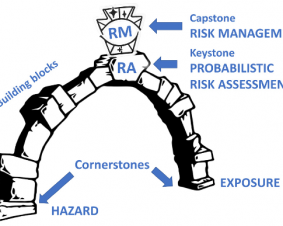 >
Spotlight September 2023: Fishing for raw materials with proteins
>
Spotlight September 2023: Fishing for raw materials with proteins
The so-called rare earth elements such as neodymium, dysprosium or cerium are elements that are of great importance for the energy transition; among others they serve as components of magnets in generators for electric power generation, act as luminescent materials in energy-saving lamps or as part of the car exhaust catalytic converter. The global production of rare earth elements is currently strongly dominated by China. Separating the rare earth elements from each other and purifying them is considered particularly difficult.
English oak buds contain bacteria from which proteins called lanmodulins can be extracted. In a publication by American researchers, these proteins were studied for the separation and purification of rare earth elements. This could help to recover these elements from electronic scrap and thus no longer such large quantities of rare earth elements need to be imported. Besides, the protein-based purification processes would be much more environmentally friendly than conventional ones and thus also of interest for primary producers. Today the procedure is not yet ready for practice: Although the researchers report good separation rates (>98%) and yields (>99%) in the separation of dysprosium and neodymium, however, the rare earth concentrations that have been used are very low. Hence, this would still have to be significantly improved before it could be used in a feasible technical application, and the synthesis of the separating proteins is also a complex step.
Original Publication:
Mattocks, J.A., Jung, J.J., Lin, CY. et al. Enhanced rare-earth separation with a metal-sensitive lanmodulin dimer. Nature 618, 87–93 (2023). https://doi.org/10.1038/s41586-023-05945-5

Weitere Spotlights
Spotlight May 2023: Dual energy – edible batteries
An Italian research group reports on edible batteries that supply electric current and can be digested as food, thus providing energy a second time. What sounds funny at first has a serious background, because in medicine, power sources are needed that could be transported through the digestive tract and possibly remain in the body unintentionally, […]
Read moreSpotlight October 2021: Nanopesticides – a proposal for a risk assessment framework
The application of so-called “nanopesticides” (see also cross-sectional text Nanomaterials in plant protection products) is said to have two basic advantages: a smaller amount of pesticide is needed for the same agricultural area and the efficacy is improved. This is necessary to grow enough food for a still growing world population. However, this could also […]
Read moreSpotlight February 2022: Probabilistic risk assessment – the keystone for the future of toxicology
The basics of toxicology are constantly being reconsidered, and the approach to risk assessment is therefore constantly being put to the test, because, as William Osler is cited in this publication, “Medicine (toxicology) is a science of uncertainty and an art of probability“. In this recent paper, the team around Thomas Hartung (Johns-Hopkins University/University of […]
Read moreSpotlight November 2021: Safe Materials from Scratch – Safe-by-Design in Materials Research
Advances in the field of materials science continue to amaze us with nanoscale materials with extraordinary chemical, electrical, optical, and numerous other properties. However, some nanoscale materials have different toxicological profiles compared to the same bulk material. Since safety issues are usually addressed just before launching a product into the market, safety issues may be […]
Read more

